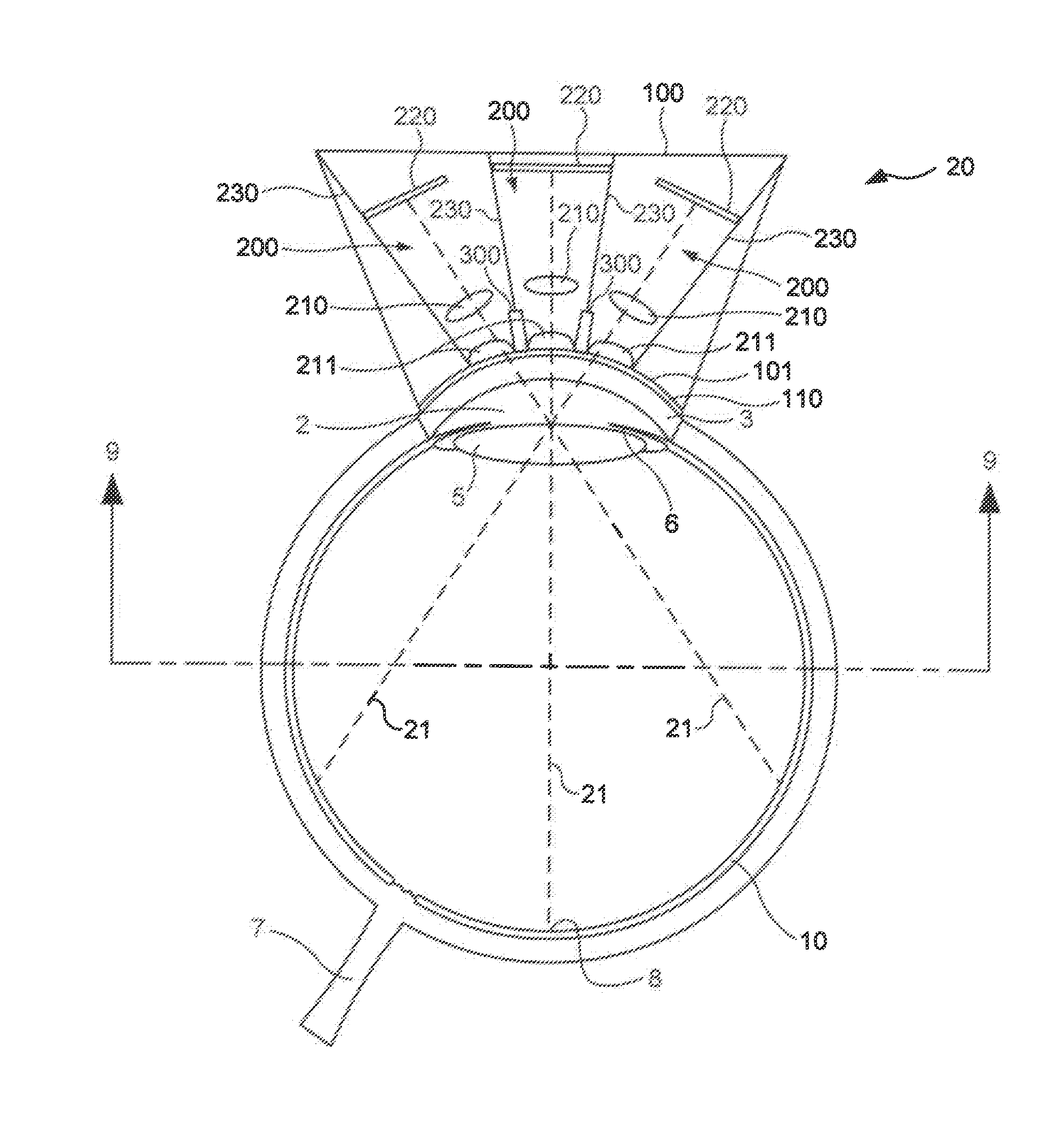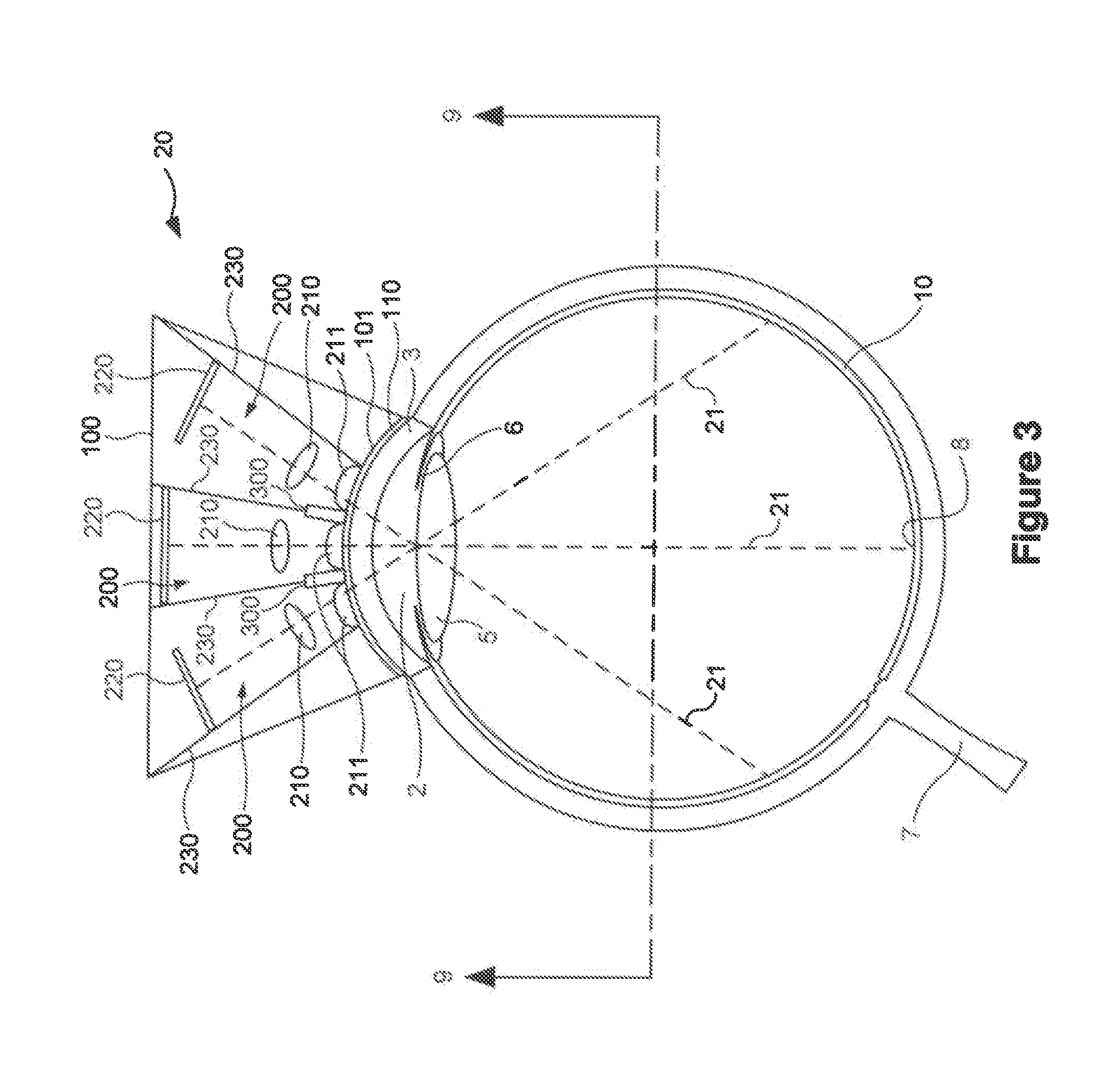Multiple-lens retinal imaging device and methods for using device to identify, document, and diagnose eye disease
a retinal imaging and multi-lens technology, applied in the field of eye examination, can solve the problems of affecting the quality of eye examination, the relative positioning of photographs, and the inability of contact retinal imaging systems to provide true wide field images, and the difficulty or inability to view standard-field imaging
- Summary
- Abstract
- Description
- Claims
- Application Information
AI Technical Summary
Benefits of technology
Problems solved by technology
Method used
Image
Examples
Embodiment Construction
[0036]FIG. 1 illustrates the basic anatomy of the human eye 1 in transverse cross section. FIG. 2 illustrates corresponding landmarks on the retina 10. Structures of the eye 1 that will be referred to in describing one or more embodiments of this invention include: cornea 3, sclera 9, corneoscleral ocular surface 4, which may be placed in physical contact with one surface 101 of chassis 100; iris 6, pupil 2, through which optical paths 21 pass in order to capture images 60 of the retina 10; lens 5, through which optical paths 21 pass in order to capture images 60 of the retina 10; and the retina 10 itself, which is imaged using embodiments of the invention, and which is centered at the macula 8. The cornea 3, sclera 9, and adjacent tissues constitute the ocular surface 4 against which device 20 may be placed in direct contact, with or without a disposable or reusable transparent cover 110.
[0037]The average corneal diameter in a newborn human is approximately 9-10 mm and in an adult ...
PUM
 Login to View More
Login to View More Abstract
Description
Claims
Application Information
 Login to View More
Login to View More - R&D
- Intellectual Property
- Life Sciences
- Materials
- Tech Scout
- Unparalleled Data Quality
- Higher Quality Content
- 60% Fewer Hallucinations
Browse by: Latest US Patents, China's latest patents, Technical Efficacy Thesaurus, Application Domain, Technology Topic, Popular Technical Reports.
© 2025 PatSnap. All rights reserved.Legal|Privacy policy|Modern Slavery Act Transparency Statement|Sitemap|About US| Contact US: help@patsnap.com



